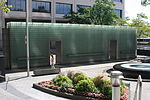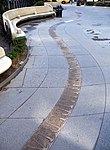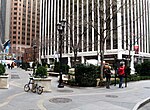New York City Police Museum
The New York City Police Museum (NYCPM) is a museum that has featured the history and contributions of the New York City Police Department since its establishment in 1845. The museum was located in Lower Manhattan in New York City, near Wall Street and the South Street Seaport prior to losing its home due to Hurricane Sandy. While one of the museum's primary focuses is a memorial to the September 11 attacks, the museum contains a wide range of information on the history of the NYPD. It also allows visitors to simulate a police firefight, and judges whether or not the shooting was correct, allowing civilians to have some understanding of situations that police face and provide them with a better understanding of the work of police officers than that provided by the media.
Excerpt from the Wikipedia article New York City Police Museum (License: CC BY-SA 3.0, Authors).New York City Police Museum
Water Street, New York Manhattan
Geographical coordinates (GPS) Address Nearby Places Show on map
Geographical coordinates (GPS)
| Latitude | Longitude |
|---|---|
| N 40.703333333333 ° | E -74.008611111111 ° |
Address
55 Water Street
Water Street 55
10004 New York, Manhattan
New York, United States
Open on Google Maps








